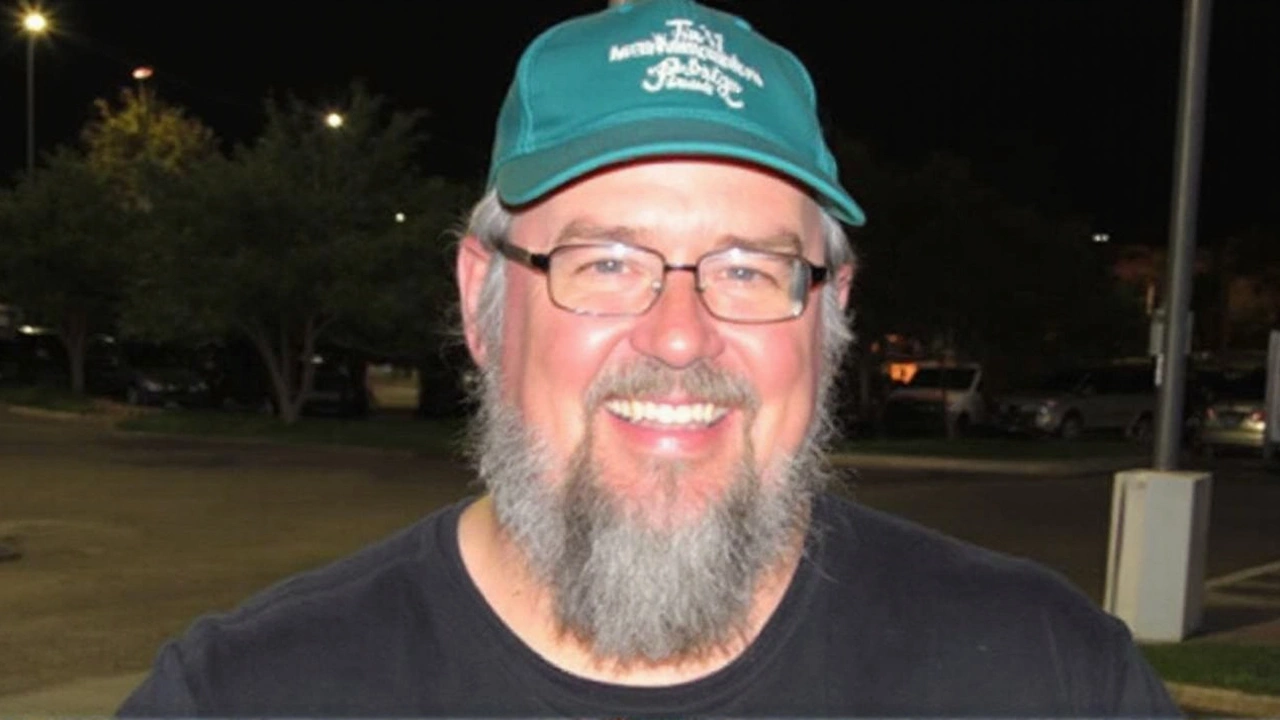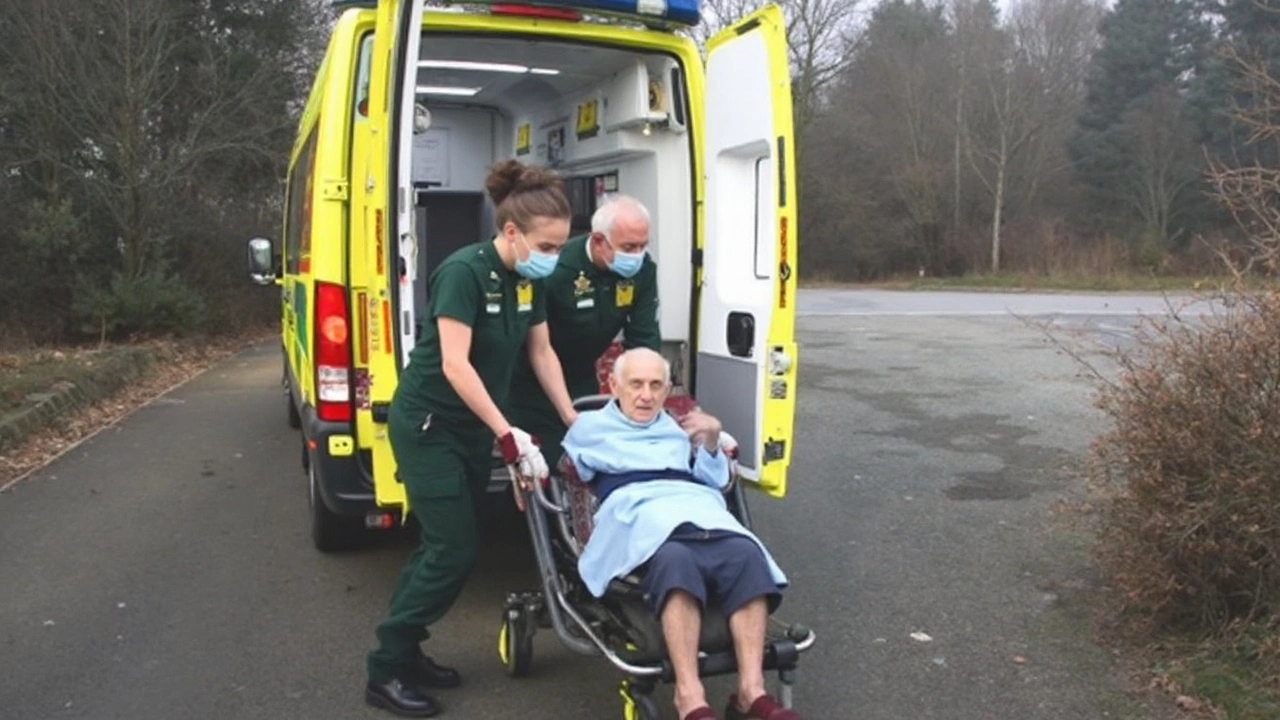A day on the front line
It was a foggy January morning in Coventry when Danny Thompson, a paramedic with the West Midlands Ambulance Service, pulled on his jacket and checked the ambulance’s inventory. Beside him, technician Dan Fiedler ran a quick systems test, making sure the radios weren’t going to die mid‑call. By 7 am the city was wrapped in a chill that turned every breath into a cloud.
Their first alarm rang just before 8 am – a call about an 86‑year‑old man named Edward who had slipped and hurt his arm. Edward had been home for three days, nursing bruising and swelling, because the television advert he’d seen warned people to dial 999 only for life‑or‑death situations. When the crew finally pulled up to his house, the old man’s arm was visibly swollen, his face drawn with fatigue.
Edward’s story is a stark reminder of how the NHS ambulance crisis is reshaping patient behaviour. He told Danny and Dan he’d watched the adverts repeatedly and convinced himself the injury wasn’t “serious enough”. By the time they arrived, his pain had been managed only with ibuprofen and a soggy blanket.
From that point on the shift turned into a marathon of sirens and red lights. The fog made navigation tricky, but the crew managed to reach a downtown nursing home where an elderly couple had also delayed calling for help. The woman admitted they were scared of “bothering” the service, a sentiment echoing across the city’s senior community.
Mid‑morning brought a more urgent case: a man who had just undergone emergency pacemaker surgery. He was portable, breathing steadily, but the paramedics had to monitor his vitals closely while racing through traffic to the hospital’s cardiac unit. The contrast between a life‑saving intervention and Edward’s lingering pain underscored the unpredictable spectrum of calls the crew faced.
By lunchtime the ambulance’s log was a mix of broken bones, severe asthma attacks, and a young mother with a high fever baby. Each call demanded a quick assessment, decisive treatment, and sometimes a difficult conversation about whether the situation truly warranted an emergency response.
Even as the day wore on, the crew’s radio crackled with updates about hospitals operating at capacity. Beds were scarce, and some patients were being held longer in ambulances while doctors sorted out admissions. Dan noted that the waiting time inside the vehicle sometimes rivaled the time it took to get to the scene.
When the clock struck 7 pm, the shift finally ended – a rare occurrence this winter. Danny and Dan restocked their supplies, logged a day filled with high‑stakes decisions, and handed the keys over to the night crew. Their final words to each other were less about the number of calls answered and more about the lingering image of Edward’s swollen arm, a visual reminder that the messaging meant to protect the service might be harming those it’s supposed to help.

The wider fallout
The Sky News investigation that followed the crew’s 12‑hour shift painted a bigger picture: ambulance response times across the UK have never been slower. Winter demand spikes, staff shortages, and an aging population have combined to push the system to its limits. Public health officials admit that the current framework for emergency calls is a balancing act – deter non‑urgent calls while ensuring urgent cases get through.
What Edward’s experience reveals is a feedback loop. When people hear “only call if it’s life or death,” they internalise a higher threshold for seeking help. That hesitation can turn a simple fracture into a complication, a mild infection into sepsis, and a bruised arm into an immobile limb. The downstream effect is more complex cases for paramedics, longer on‑scene times, and ultimately, higher pressure on hospitals already stretched thin.
Community groups are pushing back, urging the NHS to fine‑tune its public messaging. Some suggest adding clear examples – a broken leg, severe chest pain, or an uncontrolled bleed – to the adverts. Others recommend a separate helpline for non‑urgent concerns, allowing callers to receive medical advice without tying up emergency lines.
Meanwhile, frontline staff like Danny are warning that the status quo is untenable. “If we keep telling people to stay home unless it’s absolutely critical, we’ll see more of these delayed‑presentation cases,” he said after the shift. “We’re already seeing a rise in patients arriving with conditions that have worsened because they waited too long.”
Hospital administrators confirm the trickle‑down impact. Emergency departments report higher rates of patients arriving with complications that could have been avoided with earlier intervention. The cost isn’t just financial; it’s measured in longer recoveries, more intensive treatments, and, for many, a reduced quality of life.
Policy makers are now faced with a tough question: how to keep the 999 line free for true emergencies without inadvertently silencing those who genuinely need help? The answer may lie in a multi‑pronged approach – clearer public education, better triage tools, and investment in community health services that can take the pressure off ambulance crews.
As the winter months roll on, the ambulance crews on Coventry’s fog‑laden streets will continue to navigate a landscape where every call could be a race against time. Their stories, like Edward’s, serve as a reminder that behind the sirens are real people whose health decisions are shaped by the messages they hear at home.
